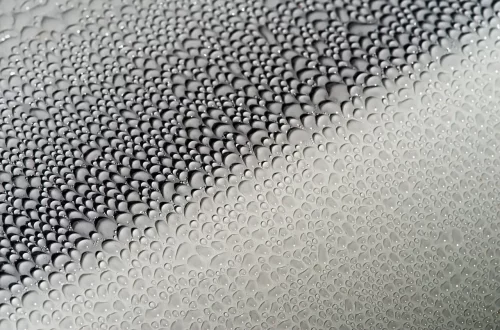
Effective Serratus Muscle Stretch Techniques for Improved Mobility
The serratus anterior muscle plays a crucial role in upper body mobility and stability, often overlooked in discussions about strength training and flexibility. This muscle is located on the side of the thorax, stretching from the upper eight or nine ribs to the medial border of the scapula. Its primary function is to facilitate the movement of the shoulder blade, enabling actions such as reaching, pushing, and lifting. When this muscle is tight or underactive, it can lead to compromised shoulder function and increased risk of injury.
Improving the flexibility of the serratus anterior can significantly enhance athletic performance and everyday movements. Many people, particularly those who spend long hours at a desk or engage in repetitive upper body activities, may experience tightness in this area. This tightness can contribute to poor posture, reduced range of motion, and discomfort in the shoulders and neck. Therefore, incorporating effective stretching techniques into your routine is essential for maintaining optimal mobility and preventing injuries.
In this article, we will explore various serratus muscle stretch techniques designed to enhance flexibility, improve performance, and promote overall upper body mobility. By understanding how to effectively stretch this vital muscle, you can support better movement patterns and reduce the risk of discomfort in your daily life.
Understanding the Serratus Anterior Muscle
Before diving into specific stretching techniques, it’s essential to understand the anatomy and function of the serratus anterior muscle. This muscle is often referred to as the “boxer’s muscle” because of its involvement in the punching motion. It is responsible for protracting the scapula, allowing for the movement of the shoulder blade away from the spine. This action is crucial for activities such as throwing, pushing, and lifting.
The serratus anterior is innervated by the long thoracic nerve, which can be susceptible to injury, leading to conditions such as winged scapula. When this muscle is weak or tight, it can cause compensatory movements in other shoulder muscles, which may lead to overuse injuries. Therefore, understanding how to maintain flexibility and strength in the serratus anterior is vital for overall shoulder health.
Stretching this muscle not only helps to enhance its flexibility but also improves the range of motion in the shoulder joint. Regularly incorporating serratus anterior stretches into your workouts can contribute to better posture and alignment. This is particularly important for individuals who spend significant time sitting or engaging in activities that promote rounded shoulders.
In addition to the physical benefits, stretching the serratus anterior can also enhance neuromuscular awareness. This means that by practicing specific stretches, you can become more attuned to your body’s movements, leading to improved coordination and performance in various physical activities.
Effective Stretching Techniques for the Serratus Anterior
When it comes to stretching the serratus anterior, several techniques can be employed. Here are three effective methods to help improve flexibility and mobility in this crucial muscle group.
1. **Wall Slide Stretch**: To perform this stretch, stand with your back against a wall. Position your arms in a “W” shape, with your elbows bent and close to your body. Slowly slide your arms up the wall while maintaining contact with the surface. As you extend your arms, focus on protracting your shoulder blades. Hold this position for about 15-30 seconds, then return to the starting position. This stretch not only targets the serratus anterior but also engages the entire shoulder complex.
2. **Dynamic Cat-Cow Stretch**: Start on all fours in a tabletop position, ensuring your wrists are directly under your shoulders and your knees under your hips. Inhale deeply as you drop your belly towards the floor, lifting your head and tailbone towards the ceiling (this is the cow position). Exhale and arch your back, drawing your chin to your chest (the cat position). As you move between these two positions, focus on engaging and stretching the serratus anterior. Repeat this dynamic movement for several breaths, allowing for a gentle stretch throughout the upper body.
3. **Thread the Needle Stretch**: Begin in a tabletop position. Slide your right arm underneath your left arm, allowing your right shoulder and ear to rest on the ground. You should feel a stretch across your upper back and into the serratus anterior. Hold this position for 15-30 seconds, ensuring you breathe deeply. Return to the starting position and repeat on the opposite side. This stretch is excellent for releasing tension in the upper body and promoting mobility in the shoulders.
Incorporating these stretches into your routine can significantly contribute to improved flexibility and mobility in the serratus anterior. Aim to perform these exercises consistently to experience the best results.
Incorporating Serratus Anterior Stretches into Your Routine
Integrating serratus anterior stretches into your fitness regimen requires a strategic approach. It’s important to consider when and how often to perform these stretches to maximize their benefits. Stretching should be seen as a complementary practice to your strength training and cardiovascular workouts.
1. **Pre-Workout Activation**: Prior to engaging in upper body workouts, it is beneficial to include serratus anterior stretches as part of your warm-up routine. This helps activate the muscle and prepares it for the demands of your workout. Include dynamic stretches that promote blood flow and range of motion.
2. **Post-Workout Recovery**: After a strength training session focusing on the upper body, dedicate time to static stretching of the serratus anterior. This promotes recovery and helps reduce muscle soreness. Spend 15-20 minutes on cooldown stretches that emphasize flexibility in the shoulders and upper back.
3. **Daily Flexibility Routine**: To maintain optimal mobility, consider establishing a daily stretching routine that incorporates serratus anterior stretches. Set aside time each day to focus on flexibility and mobility work, even when you are not engaging in formal exercise. This could be as simple as a few minutes of stretching during breaks at your desk or in the evening before bed.
4. **Mindful Movement Practices**: Engaging in activities such as yoga or Pilates can also complement your serratus anterior stretching routine. These practices focus on overall body awareness and flexibility, which can enhance your results. Many yoga poses and Pilates exercises naturally engage the serratus anterior, providing both strength and stretch.
Consistency is key when incorporating serratus anterior stretches into your routine. By making these stretches a habit, you can enjoy improved mobility, better posture, and reduced risk of shoulder injuries.
Benefits of Improved Serratus Anterior Flexibility
The benefits of enhancing flexibility in the serratus anterior extend beyond just improved range of motion. Here are some of the key advantages associated with maintaining this muscle’s elasticity:
1. **Enhanced Athletic Performance**: Athletes across various sports rely on the serratus anterior for powerful and efficient upper body movements. Improved flexibility allows for better force generation during activities like throwing, swinging, and pushing. This can lead to enhanced performance and reduced risk of injury.
2. **Better Posture**: Tightness in the serratus anterior can contribute to rounded shoulders and poor posture. By regularly stretching this muscle, individuals can promote better alignment and reduce the likelihood of developing postural issues. Improved posture can also alleviate tension in the neck and upper back.
3. **Injury Prevention**: Maintaining flexibility in the serratus anterior helps to prevent overuse injuries, particularly in individuals who engage in repetitive upper body movements. Stretching this muscle can also enhance the overall stability of the shoulder joint, reducing the risk of acute injuries during physical activities.
4. **Increased Blood Flow**: Stretching promotes better circulation to the muscles, which can aid in recovery and overall muscle health. Improved blood flow to the serratus anterior can enhance nutrient delivery and remove metabolic waste, supporting optimal muscle function.
5. **Stress Relief**: Engaging in stretching routines can also have a positive impact on mental well-being. The practice of stretching encourages mindfulness and relaxation, helping to reduce stress and tension in both the body and mind.
In conclusion, focusing on the flexibility of the serratus anterior can yield multiple benefits for overall health and performance. By incorporating effective stretching techniques into your routine, you can enhance mobility, prevent injuries, and promote better postural alignment.
**Disclaimer**: This article is for informational purposes only and does not constitute medical advice. Always consult a healthcare professional for any health-related concerns or conditions.




